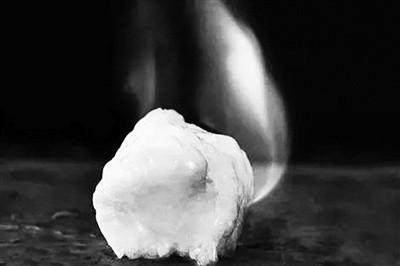China News Service, Chengdu, November 1 (Reporter He Shaoqing) "Experts on natural gas hydrate (commonly known as combustible ice) often use the traditional thinking model of oil and gas field development to consider the development of natural gas hydrate, but the two are actually not the same. Zhou Shouwei, vice chairman of the China Association for Science and Technology and director of the State Key Laboratory of Oil and Gas Geology and Development Engineering of Southwest Petroleum University, pointed out in Chengdu on November 1 that natural gas hydrates can be subdivided into six levels from the perspective of development, and different types of natural gas Hydrates should adopt different development models.
In the afternoon of the same day, the 12th World Gas Hydrate Research and Development Conference sponsored by the Executive Committee of the World Gas Hydrate Research and Development Conference and the Chinese Academy of Engineering was held on the Chengdu campus of Southwest Petroleum University. The development and commercial use of combustible ice has become a hot topic of discussion among representatives of universities, scientific research institutions, and energy companies in more than 10 countries and regions around the world.
"Although the development of marine gas hydrates has taken a crucial step, it still faces huge challenges in terms of basic theoretical research, mining methods, equipment, and operating modes." Zhou Shouwei pointed out that natural gas hydrates, shallow gas, The "three gas combined production" of conventional gas may be an effective way to realize the commercial development and utilization of natural gas hydrate in the early stage of mankind.
In 2017, China conducted a trial mining of combustible ice in the Shenhu waters of the South China Sea. This successful trial mining is the first time that China has successfully achieved safe and controllable mining of argillaceous silt-type natural gas hydrate, which accounts for more than 90% of the world's resources and is the most difficult to develop.
According to Zhao Jinzhou, President of Southwest Petroleum University, China is rich in natural gas hydrate resources, and the 11 occurrence areas in the South China Sea alone have 85 trillion cubic meters. The natural gas hydrates in China's seas are mainly "non-diagenetic natural gas hydrates" without a rock skeleton. During mining, there are risks such as sand entering the well and the collapse of the hydrate ore body.
"Research shows that the amount of natural gas hydrate resources is about twice the total carbon of traditional fossil fuels in the world. The development and utilization of natural gas hydrates will change the global energy supply and demand situation in the future." World Natural Gas Hydrate Research and Kvamme, vice chairman of the Executive Committee of the Development Conference and a professor at the University of Bergen in Norway, pointed out that the commercial utilization of natural gas hydrates is a world problem. Chinese and foreign experts should strengthen exchanges and cooperation to jointly promote the development and utilization of natural gas hydrates.
Japan tried twice to extract combustible ice on the seafloor and extract methane, but due to the inflow of seabed sand into the mining well, both trials were interrupted in the middle. Hitoshi Tomaru, a professor at Chiba University in Japan, shared the experience and lessons of natural gas hydrate mining in Japan. He pointed out that Japan hopes to extend the mining time of methane hydrates and reduce mining costs. There are still some technical problems that need to be broken through. He hopes that more companies can participate in the mining of natural gas hydrates in Japan. (Finish)
This article is transferred from China Coal News Network
More company information
Welcome to pay attention to [Jingji Technology Co., Ltd.] WeChat public account





